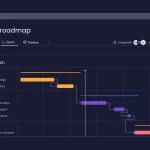Share this
In the rapidly evolving landscape of modern business, employee monitoring software has emerged as a pivotal tool for organizations. This software facilitates efficient tracking of employee activities, enhances productivity, ensures compliance, and fortifies security. This article delves into the multifaceted aspects of employee monitoring software, exploring its benefits, features, implementation strategies, and ethical considerations.
What is Employee Monitoring Software?
Employee monitoring software is a technology solution designed to track, record, and analyze employee activities within an organization. This software can monitor various activities such as keystrokes, internet usage, emails, applications used, and more. It aims to provide insights into employee performance, ensure adherence to company policies, and protect against potential security breaches.
Benefits of Employee Monitoring Software
1. Increased Productivity
Implementing employee monitoring software helps organizations identify productivity patterns. By analyzing how time is spent on various tasks, managers can optimize workflows and allocate resources more effectively. This leads to a significant increase in overall productivity.
2. Enhanced Security
In an era where data breaches are prevalent, protecting sensitive information is paramount. Employee monitoring software plays a crucial role in identifying suspicious activities, such as unauthorized access to confidential data, thereby enhancing organizational security.
3. Compliance Assurance
Many industries are subject to stringent regulations that require meticulous monitoring of employee activities. Employee monitoring software assists in ensuring compliance with legal and regulatory requirements, thereby mitigating risks associated with non-compliance.
4. Improved Accountability
By tracking employee activities, organizations can foster a culture of accountability. Employees are more likely to adhere to company policies and perform their duties diligently when they know their actions are being monitored.
5. Efficient Resource Management
Employee monitoring software provides insights into the utilization of company resources, including hardware, software, and internet bandwidth. This information helps in optimizing resource allocation and reducing wastage.
Key Features of Employee Monitoring Software
1. Real-Time Activity Tracking
Real-time tracking allows managers to monitor employee activities as they occur. This feature is essential for identifying inefficiencies and intervening promptly to rectify issues.
2. Screen Recording
Screen recording functionality captures snapshots or video recordings of an employee’s screen at regular intervals. This feature is useful for reviewing work processes and ensuring adherence to protocols.
3. Application Usage Monitoring
This feature tracks the applications used by employees and the duration of their usage. It helps in understanding which tools are essential for productivity and which ones may be causing distractions.
4. Keystroke Logging
Keystroke logging records the keys pressed on a keyboard. This feature is often used to monitor typing patterns and detect unauthorized activities.
5. Email and Internet Monitoring
Monitoring emails and internet usage helps in identifying potential security threats, such as phishing attempts, and ensures that employees are using company resources appropriately.
6. Time Tracking
Time tracking features allow for the monitoring of working hours, break times, and attendance. This information is crucial for evaluating employee performance and ensuring fair compensation.
How to Implement Employee Monitoring Software
1. Define Objectives
Before implementing employee monitoring software, it is essential to define clear objectives. Determine what you aim to achieve, such as increased productivity, enhanced security, or compliance with regulations.
2. Choose the Right Software
Selecting the right software involves evaluating various options based on features, ease of use, scalability, and cost. Ensure that the chosen software aligns with your organization’s needs and objectives.
3. Communicate with Employees
Transparency is key when implementing employee monitoring software. Communicate the purpose and scope of the monitoring to employees. Address their concerns and emphasize the benefits of the software for both the organization and the employees.
4. Establish Policies
Develop comprehensive policies that outline the use of employee monitoring software. These policies should cover the scope of monitoring, data privacy considerations, and the consequences of policy violations.
5. Provide Training
Offer training sessions to familiarize employees with the software and its functionalities. This ensures that they understand how the software works and how it will be used to improve organizational efficiency.
6. Monitor and Review
Regularly review the data collected by the software to identify trends and areas for improvement. Use this information to refine your monitoring strategies and address any issues that arise.
Ethical Considerations of Employee Monitoring Software
1. Privacy Concerns
Employee monitoring raises significant privacy concerns. It is crucial to balance the need for monitoring with respect for employee privacy. Ensure that monitoring practices are transparent, lawful, and limited to work-related activities.
2. Consent and Transparency
Obtaining employee consent and maintaining transparency about monitoring practices is essential. Employees should be informed about what is being monitored, how the data will be used, and who will have access to it.
3. Data Security
The data collected through monitoring software must be stored securely to prevent unauthorized access. Implement robust security measures to protect sensitive information and comply with data protection regulations.
4. Ethical Use of Data
The data collected should be used ethically and responsibly. Avoid using the data for purposes unrelated to the stated objectives of the monitoring program.
5. Legal Compliance
Ensure that your monitoring practices comply with relevant laws and regulations. This includes obtaining necessary permissions and adhering to labor laws and data protection regulations.
Top Employee Monitoring Software Solutions
Here are some of the top employee monitoring software solutions available today:
1. Teramind
Teramind offers a comprehensive suite of monitoring tools, including user activity tracking, screen recording, and data loss prevention. It provides real-time alerts and detailed reports, making it a popular choice for organizations of all sizes.
2. Hubstaff
Hubstaff focuses on time tracking and productivity monitoring. It includes features such as activity levels, screenshots, and GPS tracking, making it ideal for remote and field teams.
3. ActivTrak
ActivTrak provides insights into employee productivity through application usage monitoring and behavior analytics. It offers detailed reports and visualizations to help managers understand work patterns.
4. Veriato
Veriato specializes in user behavior analytics and insider threat detection. It provides comprehensive monitoring features and is particularly suited for organizations with stringent security requirements.
5. Time Doctor
Time Doctor offers time tracking, task management, and productivity monitoring. It is designed to help teams improve efficiency and accountability.
Choosing the Right Employee Monitoring Software
When choosing employee monitoring software, consider the following factors:
1. Scalability
Ensure that the software can scale with your organization’s growth. It should be capable of accommodating an increasing number of users and activities.
2. Customizability
Look for software that allows customization to fit your organization’s specific needs. This includes configurable monitoring settings, reports, and alerts.
3. User-Friendliness
The software should be easy to use for both administrators and employees. A user-friendly interface reduces the learning curve and enhances adoption.
4. Integration
Choose software that integrates seamlessly with your existing systems and tools. This ensures a smooth implementation process and minimizes disruptions.
5. Support and Maintenance
Opt for software that offers reliable customer support and regular updates. This ensures that any issues can be resolved promptly and that the software remains up-to-date with the latest features.
Future Trends in Employee Monitoring Software
1. AI and Machine Learning
The integration of AI and machine learning into employee monitoring software is expected to enhance its capabilities. These technologies can provide deeper insights into employee behavior and predict potential issues before they arise.
2. Remote Work Monitoring
With the rise of remote work, monitoring software is evolving to address the unique challenges of managing distributed teams. Expect to see more features focused on remote employee engagement and productivity tracking.
3. Enhanced Data Privacy
As data privacy concerns continue to grow, future monitoring software will likely include more robust privacy protections. This includes features that anonymize data and provide greater control over what is monitored.
4. Real-Time Analytics
Real-time analytics will become more prevalent, allowing organizations to respond more quickly to emerging trends and issues. This will enhance the ability to make data-driven decisions in real time.
Conclusion
Employee monitoring software is a powerful tool that can significantly enhance organizational efficiency, security, and compliance. By understanding its benefits, features, and ethical considerations, organizations can implement effective monitoring strategies that align with their goals and values. As technology continues to evolve, so too will the capabilities of employee monitoring software, offering even greater opportunities for improving workplace productivity and security.


